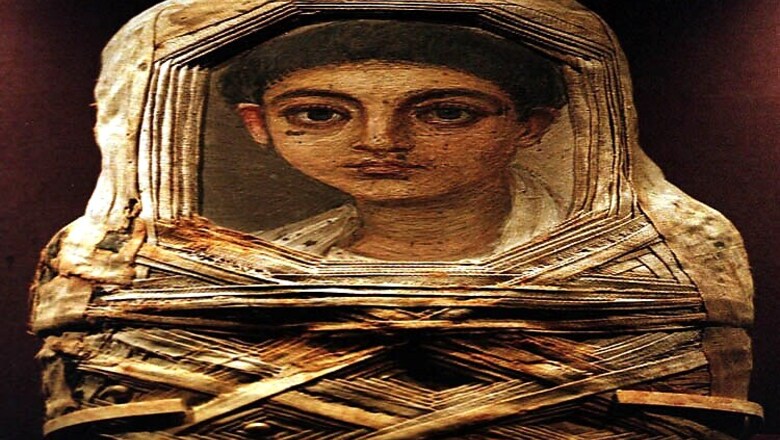
views
Cairo: Scientists have discovered that Roman-era Egyptian mummy portraits used the pigment Egyptian blue, invisible to the naked eye, as material for underdrawings and for modulating colour - a finding never before documented.
Scientists and art conservators from Northwestern University and the Phoebe A Hearst Museum of Anthropology set out to investigate the materials the painters of 15 Roman-era Egyptian mummy portraits and panel paintings used nearly 2,000 years ago.
What the researchers discovered surprised them, because it was hidden from the naked eye: the ancient artists used the pigment Egyptian blue as material for underdrawings and for modulating colour. Because blue has to be manufactured, it typically is reserved for very prominent uses, not hidden under other colours.
"This defies our expectations for how Egyptian blue would be used," said Marc Walton, research associate professor of materials science and engineering at Northwestern.
"The discovery changes our understanding of how this particular pigment was used by artists in the second century AD. I suspect we will start to find unusual uses of this colourant in a lot of different works of art, such as wall paintings and sculpture," Walton said.
Before the Greek period, Egyptian blue was used everywhere throughout the Mediterranean - in frescoes, on temples, to depict the night sky, as decoration. But when the Greeks came along, their palette relied almost exclusively on yellow, white, black and red.
"When you look at the Tebtunis portraits we studied, that's all you see, those four colours," Walton said.
"But when we started doing our analysis, all of a sudden we started to see strange occurrences of this blue pigment, which luminesces. "We concluded that although the painters were trying hard not to show they were using this colour, they were definitely using blue," Walton said.
The researchers studied 11 mummy portraits and four panel painting fragments. The 15 paintings were excavated between December 1899 and April 1900 at the site of Tebtunis (now Umm el-Breigat) in the Fayum region of Egypt.
The fragile mummy portraits are extremely lifelike paintings of specific deceased individuals. Each portrait would be incorporated into the mummy wrappings and placed directly over the person's face, said Jane L Williams, a conservator at the Hearst Museum.
The researchers uncovered the unexpected uses of Egyptian blue - the first man-made pigment, inspired by lapis lazuli, the true blue - using a routine battery of analytical techniques, such as X-ray fluorescence and X-ray diffraction.
Six of the 15 paintings have the unusual use of blue, the researchers found. The skilled painters employed blue for underdrawings, to modulate clothes and the shading on clothing.




















Comments
0 comment